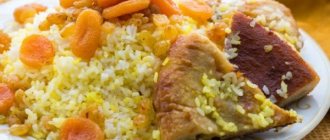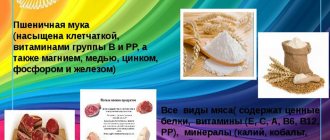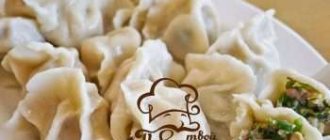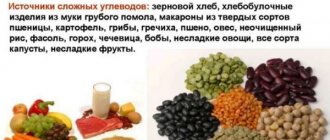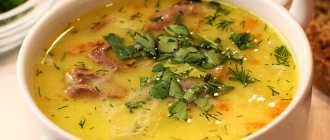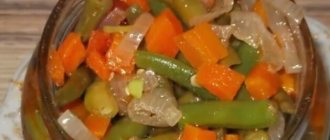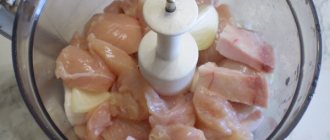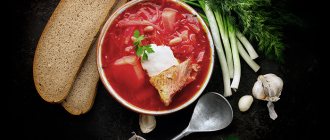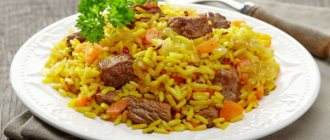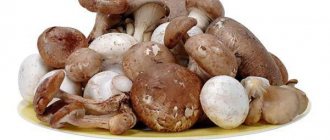Classic pilaf is a high-calorie dish that can hardly be included in the diet. On average, its calorie content is about 360 calories per 100 grams, and sometimes even more. In addition, this is a fatty dish, because it is prepared with fatty meats - lamb or pork, and a lot of vegetable oil is needed to fry vegetables.
But you can find a way out of any situation - and prepare pp pilaf, which will be low-fat and low-calorie! Such pilaf is not only possible, but also should be included in your diet! How to do it?
- Firstly, you should avoid fatty meats. Lamb and fatty pork are not the best option if you are following a healthy diet. It is best to replace these types of meat with chicken (we use fillet, it contains very few calories), turkey, veal, and beef. Even if you take lean pork, you will already reduce the calorie content of the finished dish!
- secondly, you need to very strictly monitor the amount of vegetable oil. On average, classic pilaf can take up to 50-70 grams of butter, but 100 grams of this product contains as many as 899 calories! To prepare dietary pilaf, one tablespoon of vegetable oil is enough. It is also important to use a non-stick pan when frying vegetables or meat.
- pilaf can be prepared not only from ordinary rice. If you are on a diet, you can replace white rice with brown or brown rice. Although the caloric content of such rice is the same as that of white rice, it has many times more useful substances. Wild rice is an ideal source of fiber, which you need if you want to lose those extra pounds.
Another great way to make PP pilaf is to use bulgur! It also contains a lot of coarse fiber and fiber!
- If for some reason you don’t eat meat, then remember that excellent dietary pilaf is also made with seafood. You can use shrimp, squid, mussels and any other seafood cocktail. Seafood is low in calories and fat, but it is also a source of protein, which the body needs when losing weight!
- Don't forget about vegetables! You can make pilaf with any vegetable mixture. I especially want to highlight the mushrooms! PP pilaf with mushrooms turns out tasty and low-calorie!
- To make the pilaf tasty, do not forget about spices - cumin, barberry, turmeric, saffron, pepper and others. Add your favorite seasonings to suit your taste.
- And, of course, garlic! Just one head of garlic will make your pilaf fragrant!
How is pp pilaf different from regular pilaf?
Firstly, the amount of oil. One of the secrets of any pilaf is not to skimp on vegetable oil. But with dietary interpretations, you can get by with one tablespoon. When cooking, be sure to use non-stick cookware - this makes it possible to reduce the amount of oil to a minimum.
Secondly, you need to choose the “right” meat. Traditional pork and lamb are not the best options. So, let's take the usual chicken fillet, turkey or veal (it takes a little longer to cook). You can also cook pilaf with shrimp and other seafood . Finally, instead of traditional white rice, you can use brown or brown rice, as well as bulgur.
When preparing any pilaf, do not forget about spices and garlic - everything here is the same as with classic recipes, there are no restrictions. Stock up on barberry, cumin, saffron and turmeric.
Here are some of the best diet pilaf recipes.
The best dietary and low-calorie beef dishes
How to cook beef so that not only an appetizing, but also a dietary dish appears on the table? Regarding weight loss, you can use a dietary recipe for beef, which has been in demand at all times due to its ease of preparation.
Step-by-step recipes for healthy dietary dishes made from tender beef will become your good helpers in preparing various dishes.
Original recipe without rice or any other grains
Before moving on to the recipe itself, I want you to take a close look at the photo below. What do you see? A plate of delicious pilaf, isn’t it? In fact, there is no rice or other grains at all ! This is a unique dietary analogue of the famous dish, which is cooked with cauliflower! His kbju is so low-calorie and low-carbohydrate that this pilaf can be safely eaten for dinner even by those who are currently losing weight.
Nutritional value per 100 g:
- Calories: 60,6
- Proteins: 8
- Fats 1,4
- Carbohydrates: 4
Ingredients:
- cauliflower – 1 kg
- carrots - 150 g
- onion - 120 g
- chicken fillet – 500 g
- garlic - 2-3 cloves
- salt, pepper - to taste
- spices for pilaf - 1 tsp.
- olive oil 1 tbsp.
Cooking method:
Preparing everything is not difficult at all. First of all, in a thick-bottomed saucepan, sauté the garlic in olive oil.
Then add finely chopped onion and diced carrots. Simmer until golden brown. Don't fry, but rather stew - we have recipes for healthy, proper nutrition here!
Add chicken fillet, cut into small pieces. Simmer with vegetables for 5 minutes, stirring.
Grind the cabbage in a chopper or grate it. It’s convenient that you don’t have to divide it into inflorescences or cut off too much. Just cut the whole “bouquet” into convenient pieces and chop it!
Add cabbage to the pan, add spices, salt and pepper. Simmer for 10-15 minutes under the lid and turn off. Leave to brew for another 10-20 minutes.
Is rice as scary as they make it out to be?
Before writing how to cook pilaf, I want to remind you of the positive and negative properties of rice.
Benefit. This cereal contains a large amount of carbohydrates and does not contain gluten (protein), which can cause allergies.
Rice contains vitamins B1, B2, B3, PP, and B6. They help convert all nutrients into usable energy.
Harm. It is important to remember that white polished rice is harmful to the body - it is a refined product and frequent consumption can lead to obesity. Thereby promoting the development of diabetes, cardiovascular diseases, etc.
Attention! Include the right varieties of rice in your diet - brown, brown, unpolished, and then there will be no health problems.
It is important to remember that you can eat rice (and all dishes made from it) 1-2 times a week and in the first half of the day, since it is a slow carbohydrate (it takes a long time to digest), and it is not advisable to include it for dinner.
I advise you to read my article “Unloading on rice - secrets of losing weight”
Choosing rice for pilaf
Admit it, have you had pilaf cooked unsuccessfully at least once in your life? I had it: instead of pilaf it turned out to be porridge with vegetables/meat.
This happens when you choose the wrong rice. Before buying cereal in a store, pay attention to the packaging.
For pilaf, varieties with oval grains, medium length and low starch content are best suited.
It is important that the grain is not subjected to grinding and polishing: the grain shell contains a rich mineral and vitamin composition, which has a complex positive effect on the human body.
PP pilaf with chicken and rice
This version of dietary pilaf is prepared with rice. However, I advise you to take brown instead of white, as it is much healthier. But you see for yourself, you can do an ordinary one.
KBJU per 100 g: 116/7.5/2.8/13.7
To prepare it you will need:
- non-deodorized vegetable oil - 1 tbsp.
- chicken fillet – 1 pc.
- brown rice - half as much as fillet
- carrots - the same amount as rice
- onion – 1 pc.
- salt, spices
- raisins - a handful.
How to cook:
- We wash the rice and leave it to dry. When rinsing, the water should become completely clear. So, we wash it 3-5 times. Dry on a paper towel.
- We cut the carrots into strips. To do this, first cut it into circles, then turn it into straws.
- Place a wok with oil on the stove. While everything is warming up, chop the onion. Pour oil to the very bottom of the wok. We put onions. If you have veal or lamb instead of fillet, first fry the meat, only after it add the onion. But the fillet can be placed immediately after the carrots.
- When the onion is slightly browned, add the carrots to it. Reduce the fire. Let's boil the water. If you have ready-made broth, you can use it, just bring it to a boil first. We cut the fillet.
- As soon as the carrots are browned, put the fillet in it. It is better to fry the spices together with fillet and vegetables.
- After the spices, it’s the turn of the rice; we also stew it with meat and vegetables for about 5 minutes. You can add raisins. Stir and add broth or water. The liquid should cover all components.
- Set the fire to maximum. Salt and add a whole clove of garlic (you can have it in the peel),
- When it boils, set the power of the stove to minimum. After three quarters of an hour you can turn it off.
Calorie content of pilaf and nutrient content
The calorie content of pilaf, the recipe for which is given above, is 136.04 kcal.
The calorie content
of pilaf
depends on the ingredients included in the recipe. If you look at cookbooks, you will see that the calorie content of pilaf ranges from 180 kcal to 450 kcal. Despite the fact that the dish contains meat, the calorie content of this pilaf is 136.04 kcal! This recipe applies to the protein diet.
Nutrient content per 100 grams of dish:
- Proteins -7.44g
- Fat – 4.77g
- Carbohydrates – 0g
- B1 - 0.0321g
- B2 - 0.0441 mg
- C - 0mg
- Ca - 15.6546 mg
- Fe - 0.843 mg
Classic pilaf is made from lamb. This is a specific meat, and not everyone likes it. In addition, in urban areas it is difficult to find good lamb, and it is quite expensive. Pilaf can be made from beef, and this recipe is in no way inferior to the authentic one. The main thing is to observe all the proportions of the ingredients and the sequence of their addition. Well, such an achievement of civilization as a multicooker will greatly facilitate the task of any housewife. Pilaf in a slow cooker with beef turns out especially tasty!
Bulgur pilaf in a slow cooker
Bulgur is an indispensable grain for fans of pp-cooking, many appreciate it (here is a selection of simple cooking recipes). It is also suitable for diet pilaf recipes. We will cook it in a slow cooker.
KBJU per 100 g: 141/6.3/2.4/23.5
We need:
- chicken breasts – 2 pcs.
- raisins – 150 g
- vegetable oil – 1 tbsp
- salt - to taste
- turmeric – 1 tsp.
- garlic – 3-4 cloves
- spices for pilaf
- onions – 2 pcs.
- carrots – 3 pcs.
- khmeli-suneli
- bulgur – 3.5 tbsp.
Cooking steps:
- Cut the onion into cubes and carrots into strips. We also cut the fillet into cubes. We wash the bulgur three times. Turn on the frying mode of the multicooker.
- First, onions and oil are sent there. After 3 minutes it’s the carrot’s turn. After 15 minutes, add the fillet, spices, raisins and salt. We wait 8 minutes and add bulgur and garlic.
- Pour boiled water (800ml) through a slotted spoon. We set the “pilaf” mode for 35 minutes. Let it brew and invite everyone to dinner!
Specifics of the dish
The classic pilaf recipe involves using pork meat. This component makes the dish high in calories and fat. And besides, after it there may be heaviness in the stomach. But if you replace heavy pork meat with chicken, then the dish can be called dietary. There are several recipes for preparing dietary pilaf with chicken. In any case, before preparing it you need to buy in the store:
- rice (it must be steamed, otherwise you may end up with rice porridge instead of pilaf);
- chicken meat (preference should be given to chicken breast or fillet - this is one of the most dietary types of poultry meat);
- vegetables (carrots and onions are suitable. You can add any other vegetables if desired);
- spices (it is the spices that give rice a rich aroma and taste. These can be special
- seasonings “for pilaf” or any others that are usually added to rice).
- garlic (it is added at the final stage of cooking).
You can use any amount of rice and meat for cooking. On average, 500-600 grams of poultry meat is taken for 1.5-2 cups of rice. It is worth remembering that rice is cooked in a 1:3 ratio with water.
Important! Diet pilaf with chicken breast has less fat content than when using other meat.
Low-calorie pilaf in a frying pan
A similar pilaf can be easily prepared in a frying pan, preferably in a wok. The set of products is similar, it's just a matter of personal preference.
KBJU per 100 g: 93.7/9.6/1.2/9.5
To prepare we take:
- bulgur – 400 g
- turmeric
- any natural seasoning for pilaf – a tablespoon
- carrots – 400 g
- garlic – 5 cloves
- barberry
- onion -300 g
- olive oil – 1 tbsp.
- chicken – 1 kg.
Let's prepare it like this:
- Pour oil into the wok and wait until it warms up. Add onion and simmer until golden brown. Add carrots. Cut the chicken into pieces and add to the onion. Simmer over high heat, mix everything.
- Add spices and salt. Fill with water. Reduce heat and simmer for 10 minutes. Pour in the bulgur, fill it with water so that it covers the grain on your finger. Insert garlic. Simmer for a third of an hour under the lid.
- Mix. Add salt and pepper, let it warm up over low heat. This is such beauty.
Useful tips
Simple recommendations will make the dish even healthier and more appetizing:
- It is better to fry carrots and onions in refined sunflower oil.
- If the water boils away during cooking and the rice is still raw, you need to reduce the heat and pour boiling water into the pan.
- barberry gives the dish a pleasant taste.
- When serving dietary pilaf with chicken meat, you can garnish it with herbs (parsley, dill).
- can be served with tomato sauce or ketchup.
- For multicooker owners, the cooking process becomes even easier. After frying the meat and vegetables, they need to be placed in a pan, covered with rice, and a special program (“pilaf” or “rice”) turned on. Modern multicookers will turn off on their own when the water boils and notify your household about this.
Lenten vegetarian pilaf
Vegetarians are people too))) In general, it is quite possible to combine proper nutrition and vegetarianism, although it is not easy to do. PP pilaf with mushrooms and brown rice is an excellent example of this combination. The recipe is also suitable for those for whom the word “fasting” has a lot of meaning. We will cook it in a slow cooker.
KBJU per 100 g: 92/3.1/1.8/16.2
For preparation you need:
- brown rice - 0.5 kg
- royal champignons (or other mushrooms) – 0.5 kg
- bulb
- carrots – 2 pcs.
- vegetable oil – 1-1.5 tbsp.
- garlic – 5 pcs.
- salt, spices for pilaf
- black pepper
- turmeric
- boiling water – 900-1000 ml.
How to do:
- Soak the rice, and at this time set the multicooker to frying mode. Chop the onion and cut the carrots into strips. Place them in a multi bowl.
- We cut the mushrooms into 4 parts and send them there too. Mix everything. Add all the spices and salt and fry for 4-5 minutes.
- Strain and wash the rice. Place in a slow cooker. Pour boiling water over it. We set it to “pilaf” mode. Then add the garlic and set it to the same mode again. Cook, covered, for 30 minutes.
Main conclusions
Using a dietary recipe, you can prepare a hearty pilaf with minimal calories. It perfectly diversifies your diet and provides benefits for the body. Rules:
- emphasis on vegetables or dietary meats;
- reducing the amount of salt;
- adding a minimum amount of oil or eliminating it.
You can add your favorite vegetables, a variety of spices and dietary meat to low-calorie pilaf. Such recipes will make it easier to stay on a diet.
How often do you cook pilaf? How do you reduce its calorie content? Share with our readers in the comments below.
Red rice pilaf in the oven
Red rice is a rare thing, but worthy of the attention of a true food lover. And I suggest making pilaf with this grain without any vegetable oil at all. It's easy if you cook it in the oven! The main thing is to find a comfortable heat-resistant form. Thick-walled ceramic and cast iron are good for such purposes.
KBJU per 100 g: 103.7/10.4/2.2/9.1
To prepare we take:
- red rice – 150 g
- carrots - the same amount as rice
- chicken drumsticks with bones – 450 g
- bulb
- garlic, spices, salt.
- water - 300 ml.
Description of cooking:
- We wash the rice three times, remove the skin from the drumsticks, we don’t need excess animal fat with its calories. Cut the onion and carrots. We put the vegetables in a baking dish, red rice on them, and drumsticks on top.
- Mix water with spices and pour into the mold. Preheat the oven. Cover the form with foil.
- Place in the oven. Bake for about an hour at 180 degrees. It turns out crumbly, aromatic, very appetizing!
How to cook
In the oven
Pilaf in the oven can be prepared in different ways: baked in a saucepan, a special form, small pots or directly in a kitchen oven.
The preparation process is quite simple: you need to wash and prepare all the ingredients, put them in a mold and mix. Next, the pilaf base is filled with water and spices are added. The mold is covered with a lid or foil, then the dish is cooked for about 1.5 hours at 180 degrees.
The exact cooking time depends on the chosen shape and power of your oven.
On a frying pan
It is best to use a deep pan with thick walls. During the cooking process, vegetables, rice and meat are sequentially laid out on it as desired. After a short frying, the mixture is poured with water and simmered under the lid until cooked.
Note! Vegetable and mushroom pilaf in a frying pan will cook much faster than meat pilaf. Therefore, they are suitable as an express option for guests.
In a slow cooker
To prepare such a dish, you can use the following modes:
- Pilaf. Most devices have this function and greatly simplifies the process of creating a dish.
- Rice. This mode works best for vegetarian and dietary meat-free recipes.
- Bakery. Due to the combination of different temperatures, the pilaf will be as soft as possible with a light crust; this mode is suitable for recipes with poultry and meat.
- Porridge. This function will not allow the cereal to be overcooked, due to this the texture of the dish will be ideal without sticky lumps.
Pilaf with barley beef
Veal or beef are meats that are also suitable for pp recipes. But many people like it less than the popular chicken - it’s difficult to cook beef so that it’s tasty. But in pilaf it always “looks” good. Especially in combination with pearl barley.
KBJU per 100 g: 92.5/9.5/2.1/11.9
To prepare we take:
- veal – 150 g
- carrots – 100 g
- pearl barley - 75 g
- dried red bell pepper, dried garlic, salt, spices
- water – 170 ml
- vegetable oil – 1\2 tbsp
- onion – 50 g.
How to cook:
- We cut the veal into pieces approximately the size of a hazelnut. Turn on the multicooker to baking mode - the meat should be stewed. You can cook it in a regular frying pan.
- Wash the pearl barley, chop the onion and carrots. Add vegetables to meat. Fry, add oil.
- When the vegetables and meat are fried, add seasonings and add water. Mix. Add cereal and level. We turn off the “baking” function and switch to the “pilaf” function. Cook for 35 minutes.
What ingredients are suitable for a dish when losing weight and on a diet?
Dietary pilaf should combine healthy ingredients, low calorie content and good taste. During preparation, you need to consider the following nuances:
- For dietary pilaf, it is worth using steamed rice - even with a small amount of fat, it turns out to be as crumbly and tasty as possible.
- It is best to replace fatty meat with chicken fillet or lean veal or beef. This will reduce the number of calories in the dish and make it easier on the stomach and the entire digestive system.
- Focus on vegetables. Replace large amounts of meat in traditional pilaf with healthy, low-calorie vegetables.
- Spices. Turmeric, red and black pepper, cinnamon help speed up metabolic processes in the body. This effect activates weight loss and has a beneficial effect on the functioning of the gastrointestinal tract.
- Minimum fat. In a dietary dish, you should reduce the amount of vegetable oil and completely eliminate additional animal fats.
In a low-calorie pilaf recipe, salt should be contained in a minimal amount. With excess, metabolism slows down, and excess water accumulates in the tissues of the body.
Diet recipe with seafood
Any seafood is ideal for proper nutrition and weight loss! They contain a lot of protein, but almost no carbohydrates and fats. Do you remember that we already discussed this issue when we were preparing mussels? For our special pilaf recipes, seafood can and should also be used. This recipe contains mussels, but any others (squid, shrimp, etc.) can be safely used. It turns out very tasty. But the main secret here is to cook seafood so that its meat remains tender and juicy.
KBJU per 100 g: 97.2/4.6/1.7/13.3
For a large campaign you will need:
- brown rice - 500 g
- peeled boiled-frozen mussels – 400 g
- carrots - 2-3 pcs.
- onions - 2-3 pcs.
- dill, parsley
- vegetable oil - 1.5 tbsp.
- garlic, thyme, Provencal herbs, hot pepper, salt - to taste.
We prepare in several stages:
- We chopped onions and carrots, as in previous recipes, that is, onions - into cubes, carrots - into strips. Stew first the carrots in a deep cauldron, then the onions.
- Boil the rice in water separately. Here are all the nuances of cooking. We leave the mussels on the table to just defrost.
- Mix prepared rice, mussels, chopped garlic, herbs in a cauldron with stewed vegetables. Salt, pepper, add spices. Leave on low heat under a closed lid for 15 minutes. If necessary, stir a couple of times. Now the pilaf with mussels is ready.
Dietary pilaf without frying
- 200 grams of rice. In this recipe, it is best to use steamed rice, then your pilaf will turn out much tastier. We wash the rice.
- 200 grams of chicken fillet. Cut into cubes.
- 1 carrot. Cut into cubes.
- 1 onion, finely chopped.
- Salt and favorite spices to your taste.
- 450 ml water.
Place chicken fillet in a saucepan and fill with water. As soon as the water boils, be sure to remove the foam and then add the rest of the ingredients. Cook for about 7-8 minutes. This dietary pilaf without oil can be safely included in any weight loss menu.
Secrets of delicious low-calorie pilaf
Feel free to add frozen vegetable mixtures to your pilaf. If desired, you can replace part of the cereal with them.
Experiments with spices and seasonings are welcome! They greatly influence the final taste of the dish.
As you can see, pilaf can be completely adjusted to the laws of proper nutrition. Experiment and you will succeed.
Irina Polyanitsa My name is Irina, I am the owner and admin of the site, as well as the author of most of the recipes and articles. I love to cook simple and healthy delicacies. Certified gym instructor, personal trainer. She completed a course on nutrition and health at Stanford University, Stanford Introduction to Food and Health, as well as a course at Ludwig Maximilian University of Munich (LMU) Nutrition and Lifestyle in Pregnancy (about nutrition and lifestyle during pregnancy).
Is it allowed for dinner
For dinner, you can only eat low-fat foods and those that will have time to be digested before the person goes to bed. Classic pilaf with meat is not suitable for this, but vegetable pilaf with herbs is an excellent option. Reading that rice along with vegetables will be steamed, and greens eaten fresh, you can safely prepare the dish for an evening meal.
Nutritionists warn that in this case it is important to remember the serving size - when losing weight, no more than 150 g of pilaf is allowed, and in the evening it is better to halve it and supplement it with tomato juice or low-fat fermented milk drinks (kefir, natural yogurt).
